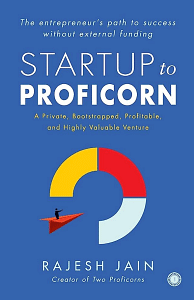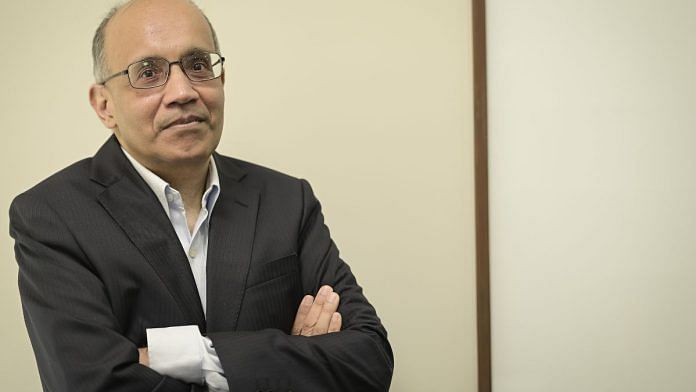When I was running IndiaWorld, I did my best to copy the good ideas out there. It gets things going faster. I was sitting in India with a small team. I did not have the luxury to experiment. So, when I wanted to launch a search engine for India, I started by looking at what Yahoo was then (a directory of websites) and replicated that for India. I then added keyword search in crawled pages similar to what Excite and Altavista offered. That became Khoj. During those days, I would always look for good features and sites that I could replicate for India.
For a startup, it is difficult to do A/B testing and run multiple experiments. The internet is itself the laboratory. So, pick up good ideas that are working elsewhere and get started. Over time, one has to innovate to thrive. But innovation itself is not a precondition to get started. This applies to product features also. Too often, a lot of time is spent coming up with ‘innovative’ ideas at the cost of time. In the early stages, speed trumps everything else. The innovation journey has a high cost in terms of time and money.
A/B testing, aka, split testing: There are so many variables that affect a business. A/B testing or split testing is when you take one such variable and test two different variants to see its impact on business, keeping everything else constant. Here’s a simple example: Imagine a product box. There are many variables that could affect how attractive it is to a customer like colour, font, size, etc.. So, you begin a series of experiments trying out different variations for one variable at a time. You start with changing the box’s colour. You send out one set of boxes in blue and another set of boxes in red to a sample group and gauge their reactions. This is an A/B test. Such experiments typically take a lot of time and effort. In some cases, it can also affect your business goals.
The problem is that we are all taught from early days that copying is a bad idea. That is the right approach in education. But in the real world, that means starting from scratch rather than building on the body of work that already exists. Such an approach simply takes too long and is very risky. Some will innovate—good for them. But that path has more failures than success stories. Let others run the evolutionary race for ideas and features. As a proficorn entrepreneur, you could simply choose from the best out there.
Imitation will not help you win the race—it is merely a ticket to play the game. After the launch, innovation needs to kick in the product, pricing, or business model. The sequencing is important. Starting off with innovation needs time and a large research and development budget which is not practical at the early stages of a venture. A good way to start therefore is to clone an idea first to become competitive, and then work on the incremental innovations.
Also read: SVB collapse shows it’s time to bring Indian startups home
Open-sourcing ideas
One of the approaches I have followed in life is to be very open with my ideas. Whether it was IndiaWorld in 1994 or Velvet Rope Marketing and Microns in 2020, I have always been of the view that sharing and discussing with others improves ideas. I go into a meeting thinking that if there is one new thing I can learn, then the meeting will have served its purpose. Since I never know until the meeting whether I can learn something or not, I stay open to them. During these, I talk about my ideas and thinking even though they may not be fully baked. The feedback I get from others helps me refine them. The more inputs, the better the idea becomes.
Microns: Imagine getting very short emails from brands you like and trust that inform, educate, and delight. These “micro newsletters” (microns, as I term them) can be read in 15–30 seconds unlike the regular emails that we typically get from brands which are full of images, text, and links. Think of them like SMSes—you want to see them right away rather than later.
The microns are not ad-driven, but content-rich. They could have breaking news, market updates, thoughtful quotes, recipes, health tips, travel recommendations, an excerpt from a poem, a brief on a new topic.
The point is that you, as an email subscriber, see them almost as soon as they come. And in that fleeting moment, you are also exposed to the brand. Microns come daily and automatically—at the same time. Their goal? Become a habit in your life.
Also read: India’s ailing discom sector needs a saviour: start-ups
In the fall of 1994 when I first came up with the idea of IndiaWorld, I discussed the idea with dozens of people. I had a Visit-USA ticket on Delta which allowed me to fly standby for a period of two months for a fixed price. It was an entrepreneur’s dream! I would talk to people and anyone who agreed to meet, I would tell them, “How about I meet you at your office tomorrow so we can discuss this in depth?” (That was, of course, in the pre-Zoom days!) Go to the airport, take the first available flight, and meet the person. No cost benefit analysis; just meet. The travel time would allow me to read and think. The different environments would trigger new ideas. The meetings themselves were like hyperlinks that opened up new windows. I became better each day—one meeting at a time.
I find many entrepreneurs now are very cagey about sharing their ideas. What they don’t realise is that someone, somewhere, is likely to have the same idea anyway. The idea is just the starting point. It is a key that opens a door. After that, it’s all about the way one executes and creates the new world. In execution, a million things have to go right for eventual success. One of the best examples here would be Zerodha. Its founders talk openly about their business models, factors behind their success and their overall strategy. Take the example of EaseMyTrip too. Their business model is open— earn commissions from the airlines, charge a simple 2% commission from agents, and avoid charging the customers any convenience fee. All the details are out there.

Extracted with permission from ‘Startup to Proficorn’ by Rajesh Jain, first published by Jaico Publishing House in June 2023.



